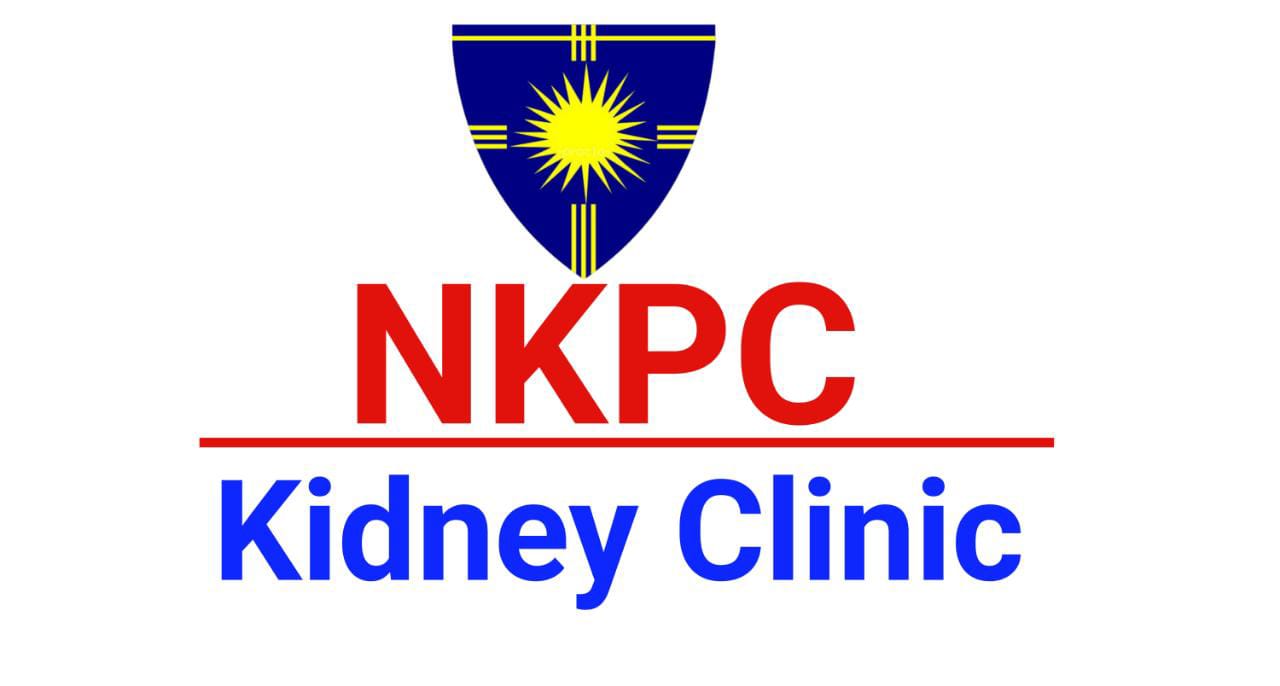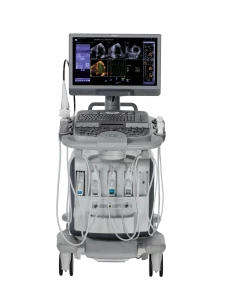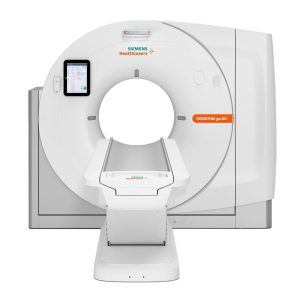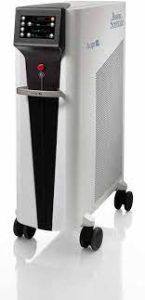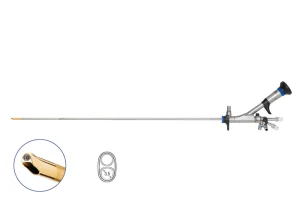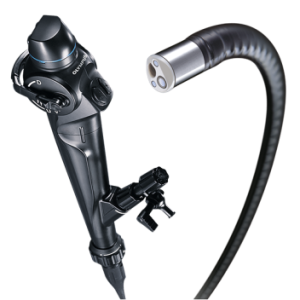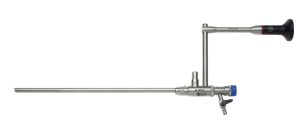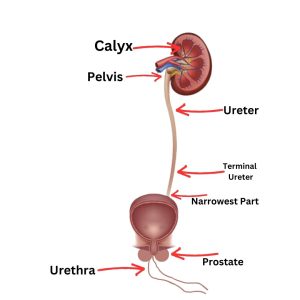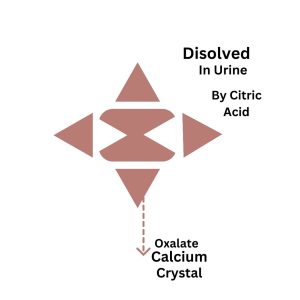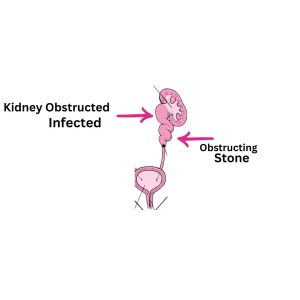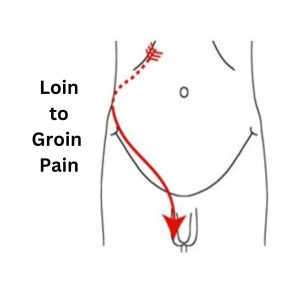Stones which are larger than 5mm, or are located in the upper ureter and not passing downwards, or are causing severe pain or infection, especially in a diabetic person, are better treated by primary endosurgical removal.
How are ureter stones operated?
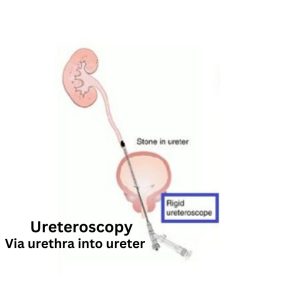
Open surgery for ureter stones has become obsolete and nowadays most stones are operated by endo-surgery. Endosurgery means operating using telescopes which can be introduced within the natural urinary passages to operate and remove ureteral stones.
When stones are located in the lower ureter we operate using a telescope called the ureteroscope. And in upper ureter we use the flexible uretero-reno-scope.
These telescopes allow us to access the ureter and visualize the stone. This endoscopic picture is seen on a medical grade high definition monitor. Which magnifies the picture 200 times. under this fine precision guidance we use the Auriga xl holmium laser to destroy the stone. The laser usually creates a plasma which destroys the stone by creating cavities within the stone. The stone often evaporates and very fine dust like particles remain. Which generally drain downstream with the flow of urine.
Management of stones located in the kidneys
Stone which are located in the kidney also cause damage by obstruction and infection. And as such need to be treated too. There are no medications which can dissolve stones in the kidney or the ureter. Although lots of patients naturally desire this kind of stone dissolving therapy. This is yet not medically possible with current day medical care.
Which stones are insignificant stones?
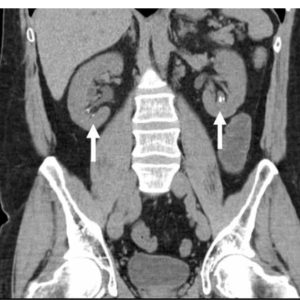
Tiny stone non Obstructing Stone
Stones which are smaller than 5mm and are not causing pain obstruction or infection can be treated as insignificant stones and need no further medical or surgical care. But to prevent growth of the stones we usually advise citric acid replacement therapy.
Citric acid is naturally available in citrus fruits and therefore we advise daily once intake of orange or musambi. These citrus fruits by increasing the levels of citric acid in the urine prevent growth of the stone.
Which stones need treatment?
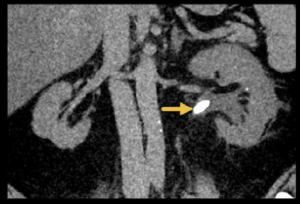
Large obstructing stone,These need Surgery
Any stone larger than 5 mm and which is causing infection or pain and obstruction needs to be treated. Since there is no medical therapy therefore these stones are best treated by laser endosurgery. Open surgery and laparoscopic surgery are rarely needed for treatment of pure stone disease.
What is RIRS surgery?
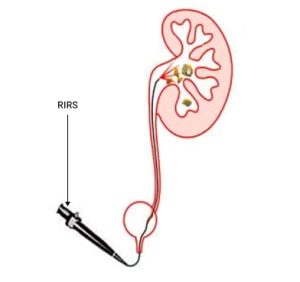
When the stone is located within the kidney and is smaller than 10mm in size it is best treated by RIRS. RIRS is retrograde intra-renal surgery. Herein we use a flexible uretero-renoscope. This is performed under general anesthesia, wherein the patient has no pain and the recovery is also very comfortable. The flexible scope is introduced via the external urinary opening and then travels via the bladder into the ureter and all the way into the renal calyces where these stones are destroyed by laser energy.
After this surgery generally a stent is placed which allows the kidney to heal and recover, and is generally removed after a period of two weeks to three months, depending on the extent of renal damage caused by the stone.
What is miniperc surgery?
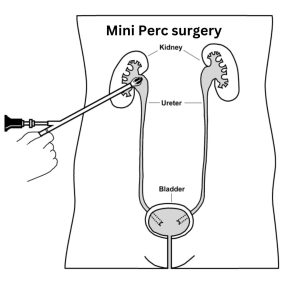
Miniperc Surgery,for stones between 10-20mm in the kidney or upper ureter
When the stone is larger than 10mm but smaller than 20 mmm it is best treated by miniperc surgery. This is performed also under general anesthesia. Herein a very tiny puncture is placed in the flank of the patient. And then we access the kidney using a mini nephroscope. Once the stone is located it is destroyed with laser energy. This is a highly effective treatment for larger kidney stones.
What is PCNL surgery?
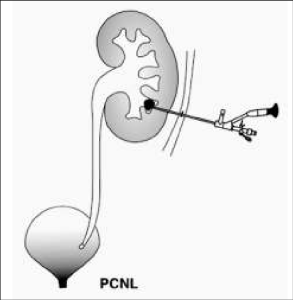
When the kidney has giant stones. Larger than 20mm in size then we use the large caliber nephroscope. These are larger caliber telescope which can visualize the stone and then remove larger stones from the kidney.
What are ureteral stents and when are they used?
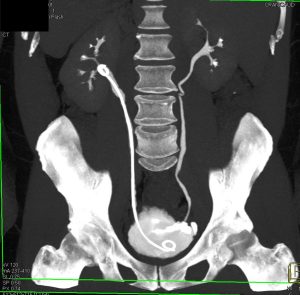
Ureteral stent are needed when the ureter or kidney are dilated
Stent is placed from kidney into bladder
When the opening of the kidney pelvis into the ureter is edematous or swollen or the ureter is damaged or the kidney is dilated and needs time to recover, we may place a silicon rubber tube, from inside the kidney via the ureter into the urinary bladder. This helps the kidney to drain the urine and allows the kidney time to recover. After adequate recovery of the kidney the stent can then be removed. This period can vary from 2 weeks to more than 3-6 months. Depending on the nature of surgery performed and also the extent of damage of the kidney.
What is the typical recovery period after laser surgery for kidney stones?
Generally, the patients recover very well after the surgery. Typically, the patients have very little pain since the skin and muscles are hardly cut in these endosurgery. The patients are usually discharged between the second to the fourth post operative day. And can resume work after seven to fourteen days of rest at home.

Laser creats a plasma bubble and destroys the stone






